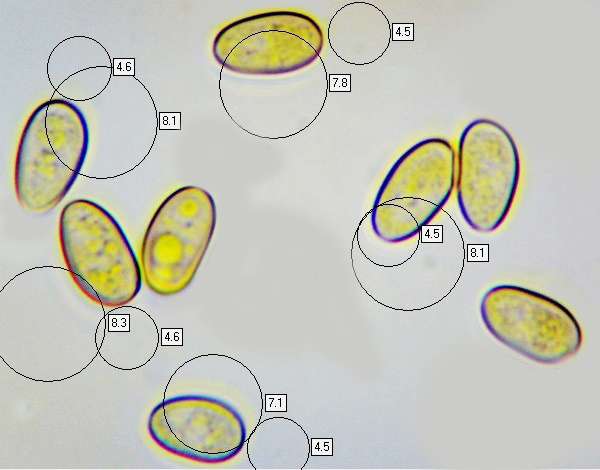Meottomyces dissimulans (Berk. & Broome) Vizzini - Winter Brownie
Phylum: Basidiomycota - Class: Agaricomycetes - Order: Agaricales - Family: Strophariaceae
Distribution - Taxonomic History - Etymology - Identification - Culinary Notes - Reference Sources
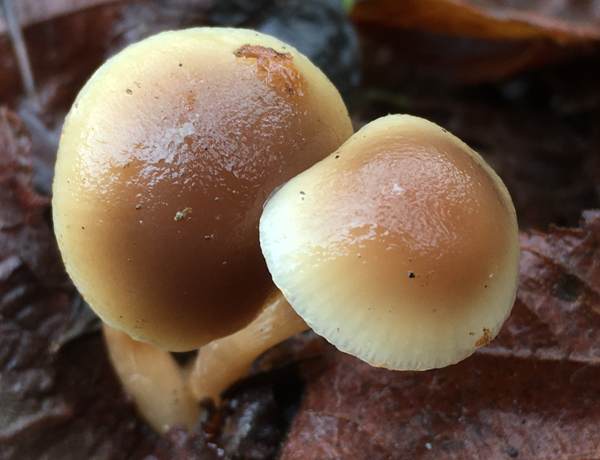
Meottomyces dissimulans, an apparently uncommon mushroom occurring in litter beneath deciduous trees and bushes in woodland habitats.
Although there are relatively few formal records of the close relative of the scalycaps (Pholiota species), this is probably because it fruits very late in the season (often around the turn of the year) when few other fungi can be found - hence it is a time when people interested in finding and identifying fungi rarely venture into woodlands.
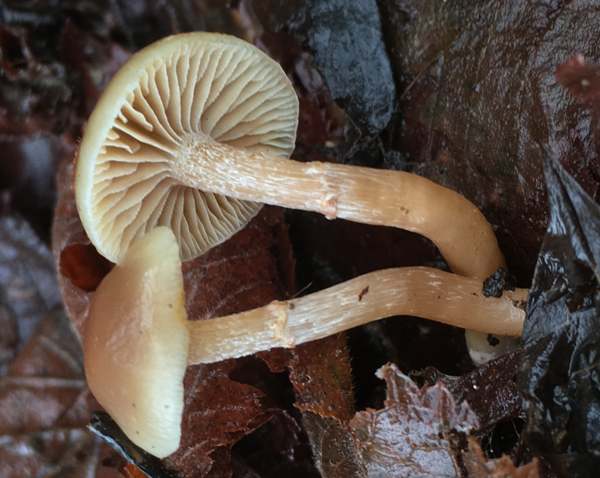
The stem ring is clearly visible on the pristine fruitbodies seen above, but the rings a fleeting and rarely evident on older specimens.
Distribution
Probably not such an uncommon species, but found rarely in Scotland and only occasionally in England - nearly always in the south and midlands - and not yet (as I write in January 2014) formally recored from Wales or Ireland, Meottomyces dissimulans is recorded in most parts of mainland Europe from Sweden right down to Portugal. There are reports of this species being found also in North America, but it is possible that these records are erroneous and the result of confusion with the very similar American species Meottomyces mutans, which has a more substantial membranous stem ring.
Taxonomic history
This late-fruiting mushroom was described in 1882 by British mycologists Miles Joseph Berkeley and Christopher Edmund Broome (1812 - 1866), who gave it the scientific name Agaricus dissimulans. The currently-accepted scientific name Meottomyces dissimulans dates from a 2008 publication by the Italian mycologist Alfredo Vizzini, who established the new genus Meottomyces in which this is currently the only known British species.
Synonyms of Meottomyces dissimulans include Agaricus dissimulans Berk. & Broome, Agaricus oedipus Cooke, Hypholoma oedipus (Cooke) Sacc., Pholiota dissimulans (Berk. & Broome) Sacc., Psathyrella oedipus (Cooke) Konrad & Maubl., Dryophila sordida Kühner, Pholiota oedipus (Cooke) P. D. Orton, Phaeogalera oedipus (Cooke) Romagn., Hemipholiota oedipus (Cooke) Bon, and Phaeogalera dissimulans (Berk. & Broome) Holec.
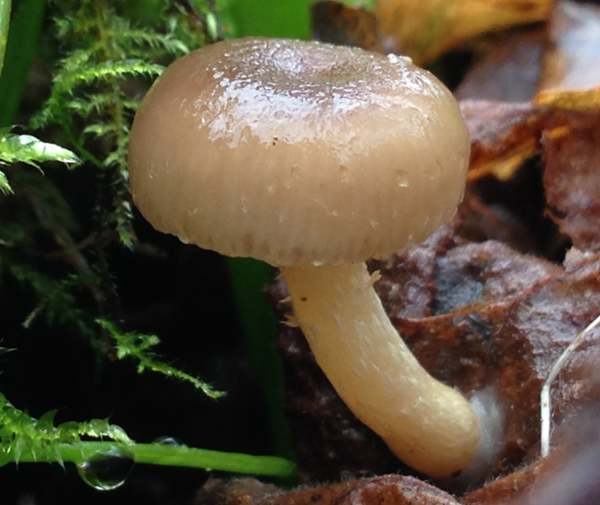
Etymology
The Meotto- prefix to the generic name Meottomyces may be honouring the Italian mycologist (a leading Truffle expert) Francesco Meotto; and the suffix -myces means fungus. The specific epithet dissimulans means 'one who is in disguise'.
Identification guide
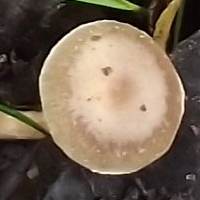 |
Cap1 to 4cm in diameter, initially convex but eventually flattening; surface greasy to somewhat viscid, hygrophanous mainly in a region near to the margin, colours rather variable but generally brown when young, sometimes tinged with olive, and with a darker middle, becoming greyer when old. Pale veil fragments often cling to the cap margin of young specimens. |
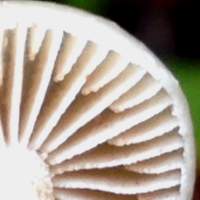 |
GillsThe broadly adnate gills are pale grey becoming greyish brown, darkening with age; they have finely serrate edges. Stem5 to 8mm in diameter and 3 to 6cm tall; pallid reddish-brown to grey-russet and soft with longitudinal fibres and a fleeting membranous ring. |
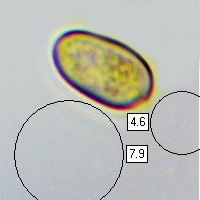 |
SporesEllipsoidal to ovoid, smooth, 6.5-8 x 4-6μm; with oil drops. (The basdia are nearly all four spored sometimes with just the occasional two-spored basidium.) Spore printDark brown. |
Odour/taste |
Not distinctive |
Habitat & Ecological role |
On leaf and twig litter beneath deciduous trees, particularly ash, poplar, hawthorn, sycamore and elm. |
Season |
Winter (mainly November to January in Britain and Ireland). |
Similar species |
Kuehneromyces mutabilis is also usually two-toned; its gills are ochraceous when young, becoming cinnamon at maturity. |
Culinary Notes
Despite their attractive appearance, these are not edible mushrooms.
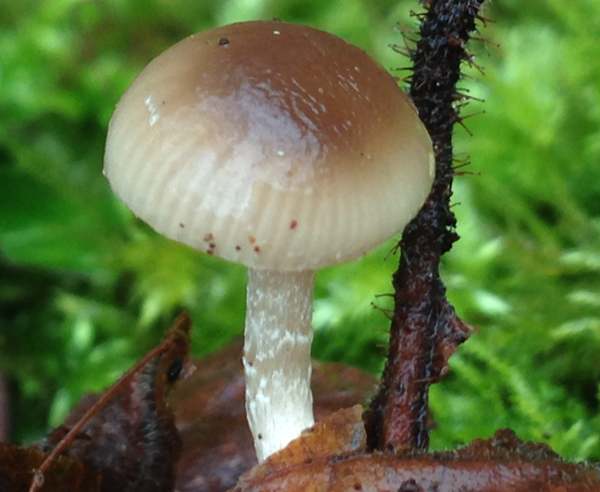
Reference Sources
Nick Legon, Fungal Portraits No. 49: Meottomyces dissimulans; Field Mycology Volume 13, Issue 1, January 2012, Pages 3–7; British Mycological Society.
Holec, J. (2003). Taxonomy and nomenclature of Pholiota dissimulans with respect to Phaeogalera oedipus. Sydowia 55: 79-85.
Vizzini, A. (2008). Novitates Miscellanea in Rivista di Micologia 51: 63-66.
Dictionary of the Fungi; Paul M. Kirk, Paul F. Cannon, David W. Minter and J. A. Stalpers; CABI, 2008
Taxonomic history and synonym information on these pages is drawn from many sources but in particular from the British Mycological Society's GB Checklist of Fungi.
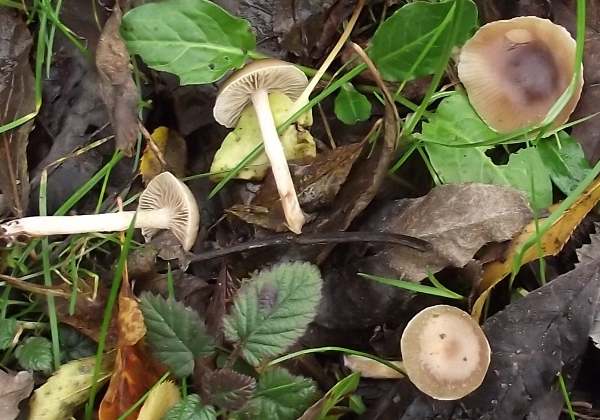
Acknowledgements
Pictures on this page were kindly contributed by Simon Harding and Richard Shotbolt.
Fascinated by Fungi. Back by popular demand, Pat O'Reilly's best-selling 450-page hardback book is available now. The latest second edition was republished with a sparkling new cover design in September 2022 by Coch-y-Bonddu Books. Full details and copies are available from the publisher's online bookshop...
